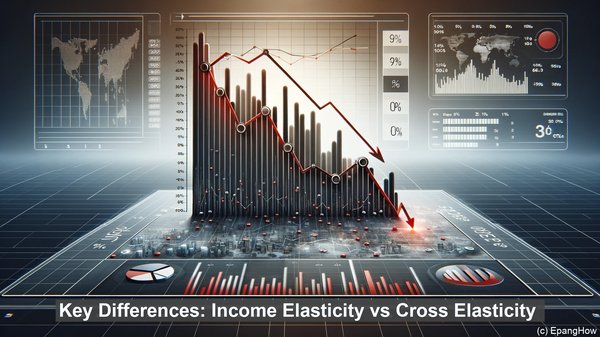Introduction: The World of Demand Elasticity
Hello everyone! Welcome to our article on the intriguing world of demand elasticity. Today, we’ll be focusing on two specific types: income elasticity of demand and cross elasticity of demand. Before we dive into their differences, let’s briefly understand what demand elasticity is.
Demand Elasticity: A Quick Overview
Demand elasticity is a measure of how sensitive the quantity demanded of a good or service is to changes in its price, income, or the price of related goods. It helps us understand how consumers’ purchasing behavior changes in response to various factors. There are different types of demand elasticity, each providing unique insights.

Income Elasticity of Demand: Unraveling the Concept
Income elasticity of demand specifically focuses on the relationship between changes in consumers’ income and the quantity demanded of a particular good or service. It helps us gauge whether a good is a normal good or an inferior good, and the extent to which demand changes with income fluctuations.
Interpreting Income Elasticity Values
When we calculate income elasticity, we often obtain a numerical value. This value can be positive, negative, or zero. A positive income elasticity indicates that the good is a normal good, with demand increasing as income rises. A negative value suggests the good is an inferior good, with demand decreasing as income increases. A value of zero implies the good is income inelastic, meaning changes in income have little to no impact on demand.
Cross Elasticity of Demand: A Different Perspective
While income elasticity focuses on the relationship between income and demand, cross elasticity of demand examines the relationship between the quantity demanded of one good and the price of another related good. It helps us understand the degree of substitutability or complementarity between goods.
Understanding Cross Elasticity Values
Similar to income elasticity, cross elasticity values can be positive, negative, or zero. A positive value indicates that the goods are substitutes, with an increase in the price of one leading to an increase in demand for the other. A negative value suggests the goods are complements, with an increase in the price of one leading to a decrease in demand for the other. A value of zero implies the goods are unrelated, with no significant impact on demand when the price of one changes.

Key Differences: Income Elasticity vs Cross Elasticity
While both concepts fall under the umbrella of demand elasticity, they differ in their focus. Income elasticity centers around income changes and their impact on demand, providing insights into the nature of the good. Cross elasticity, on the other hand, looks at the relationship between two goods, shedding light on their substitutability or complementarity. Additionally, the formulas used to calculate these elasticities differ, reflecting their unique perspectives.
Real-World Applications: Practical Significance
Understanding income elasticity and cross elasticity is crucial for businesses and policymakers. It helps them anticipate and adapt to changes in consumer behavior. For example, a company producing luxury goods would be particularly interested in the income elasticity of its products, as their demand is likely to be more sensitive to income fluctuations. Similarly, cross elasticity insights can guide pricing and marketing strategies, especially for goods with close substitutes.
